1. Iron Bar Cages With No Natural Habitat

Zoos once existed for spectacle more than science, and the animals paid the price. Visitors saw lions, tigers, and elephants locked in tight iron cages with hard concrete floors instead of soft soil or grass. These cramped spaces stripped them of movement and comfort, forcing creatures built for freedom into stillness. They could not roam, dig, or bond, only pace in restless loops. It seemed entertaining once, but it was suffering disguised as wonder. Modern zoos now strive to give animals the space, stimulation, and dignity they were always meant to have.
2. Performing Elephant Shows
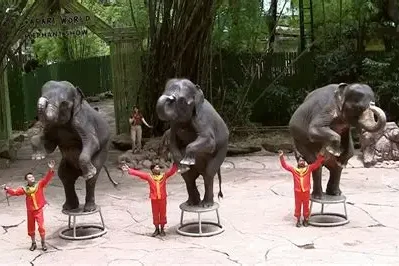
Once upon a time, elephants were the stars of zoo shows, balancing on stools or waving trunks on command. Crowds clapped while trainers barked orders and used harsh tools behind the scenes. What looked magical was often misery hidden behind forced obedience. These gentle giants, meant to roam miles and bond deeply, spent their days performing for applause. Over the years, awareness grew and cruelty was replaced by compassion. Today, elephants live in wide, natural habitats, roaming in herds as they should, reminding everyone that joy looks better when it comes naturally, not from control.
3. Chimpanzees Dressed in Human Clothing
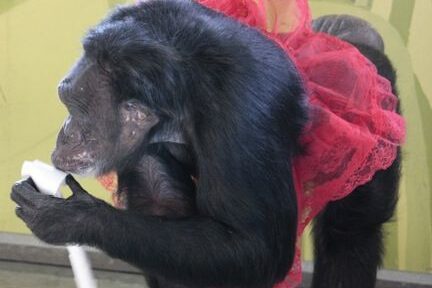
Zoos once dressed chimpanzees in human clothes to make people laugh. They sipped from cups, rode bicycles, and posed for photos, but behind the smiles was confusion and loss. These smart creatures began copying people instead of learning from their own kind. Many grew aggressive or anxious, unable to fit into groups later on. What once felt funny now feels wrong, a mistake born from ignorance. Today, chimpanzees live in family troops that mirror their natural worlds, teaching visitors about intelligence, emotion, and connection the honest way, without costumes, tricks, or forced laughter.
4. Petting Pens with Wild Animal Infants
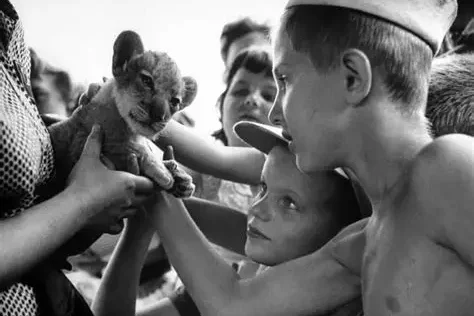
There was a time when people could hold lion cubs or feed baby bears for pictures. What seemed harmless fun came from heartbreak, because those babies were taken from their mothers too soon. They grew up stressed, lonely, and often unfit for adult life. Once they became too big to manage, most were sold or destroyed. The cycle was built on profit, not protection. Today, responsible zoos keep young animals with their mothers and prohibit public touching. Visitors now learn by observing from a distance, understanding that love means leaving wild families together.
5. Big Cat Circus Style Ring Performances
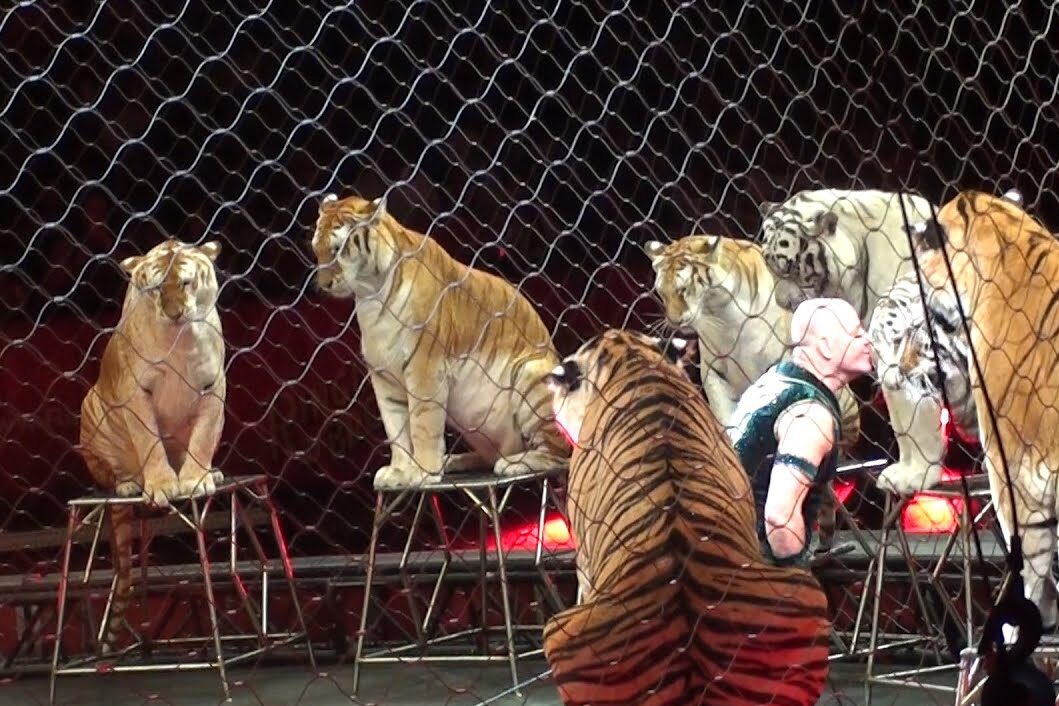
Years ago, zoos borrowed from the circus, putting lions and tigers in rings to jump through hoops or sit still on stools. People cheered without realizing fear, not fun, drove every move. Trainers used harsh tactics to keep control, ignoring natural instincts. Over time, experts proved that forcing animals to perform destroyed their confidence and health. Modern zoos now focus on education and enrichment, allowing big cats to climb, stalk, and rest as nature intended. Watching them roam freely feels far more thrilling than any trick could ever be.
6. Giraffes in Extremely Limited Enclosures
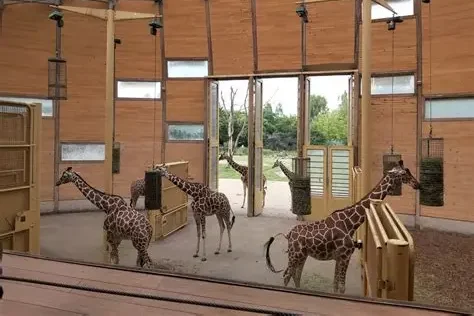
Early giraffe exhibits were small, bare spaces that barely let them move. Their long legs stood idle while they gazed through fences at people passing by. With nowhere to wander and no trees to nibble from, their muscles weakened, and their spirits faded. Over the years, zoos learned that giraffes thrive on space and companionship. Today, they live in wide open habitats with feeding towers that mimic the treetops they love. Seeing them stretch and stroll gracefully again shows how space can heal even the quietest kind of suffering.
7. Sea Lions and Seals Performing Comedy Routines

There was a time when sea lions and seals performed like comedians, clapping, honking, and balancing balls for cheering crowds. Trainers taught tricks through repetition, not respect, and the animals often grew bored or frustrated. People thought they were happy, but they were only hungry for approval. Today, things look different. Modern zoos focus on natural behaviors, letting these creatures swim, dive, and interact freely. Instead of laughs, they now inspire awe, reminding us that animals are not entertainers but living beings with moods, bonds, and needs worth protecting.
8. Reptile Handling Shows for Crowds

Years ago, reptiles were passed from hand to hand as part of zoo demonstrations. Visitors touched snakes, turtles, and lizards, believing it helped them learn. But constant handling disrupted feeding, shedding, and rest. Cold-blooded creatures thrive on calm, not chaos. Many grew sick or stopped eating entirely. Today, zoos have replaced these shows with observation-based learning. People now watch reptiles move naturally in their own space, understanding that respecting distance teaches far more than touch ever could. Education still happens, only now it comes wrapped in empathy and care.
9. Public Feeding of Carnivores
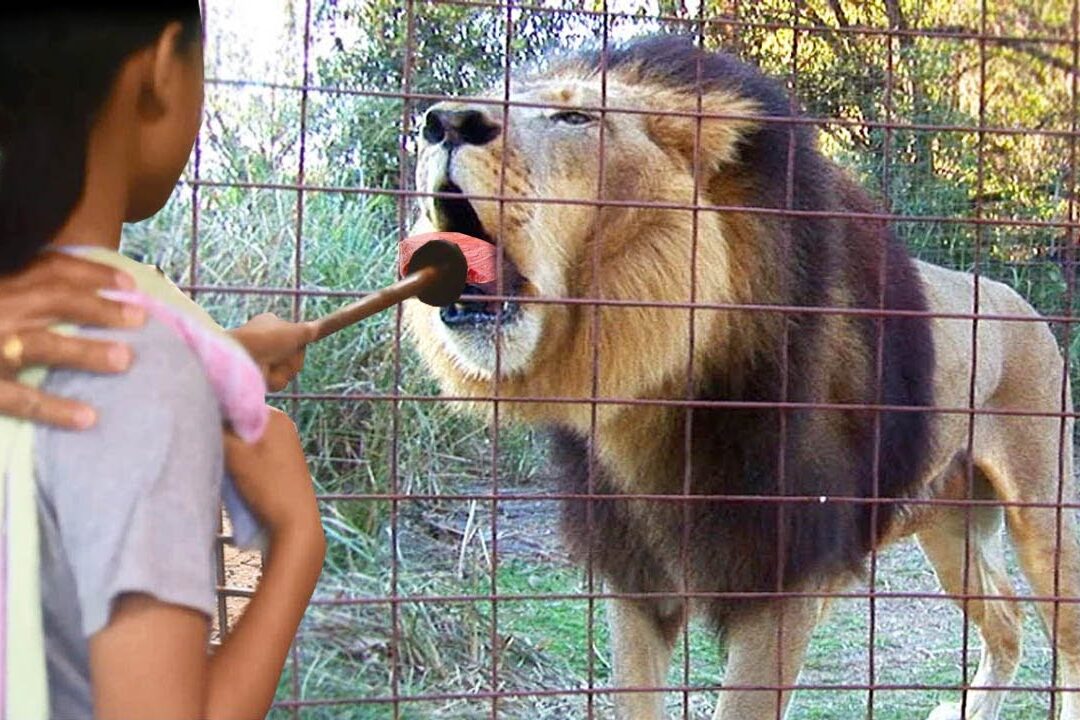
It once thrilled people to toss food into the cages of lions, bears, or wolves. They would roar and scramble for meat as the crowd laughed. What few realized was that this feeding warped instincts and made animals aggressive. Some began associating humans with food, leading to dangerous attacks. Today, feeding is done by trained staff through enrichment programs that simulate hunting. Visitors still watch, but safely, while animals behave naturally. The thrill remains, only now it feels balanced and right, proof that understanding is a better souvenir than fear.
10. Bears in Concrete Pits
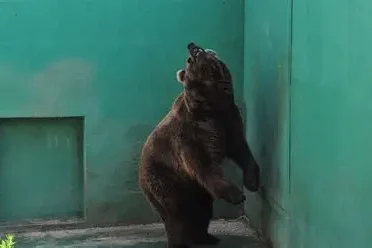
Bears were once displayed in deep concrete pits where guests looked down from above and tossed snacks while animals paced below. Those barren enclosures offered nothing like a forest environment, no trees to climb, no soft soil for digging, and no places to hide from constant human gaze. Bears developed restless behaviors and poor health because their needs were ignored in favor of spectacle and convenience. In recent decades zoos rebuilt bear habitats to include ponds, logs, varied terrain, shaded nesting areas, and enrichment that encourage swimming, foraging, and denning, giving these animals a chance to live with dignity again.
11. Penguin Exhibits Without Climate Control
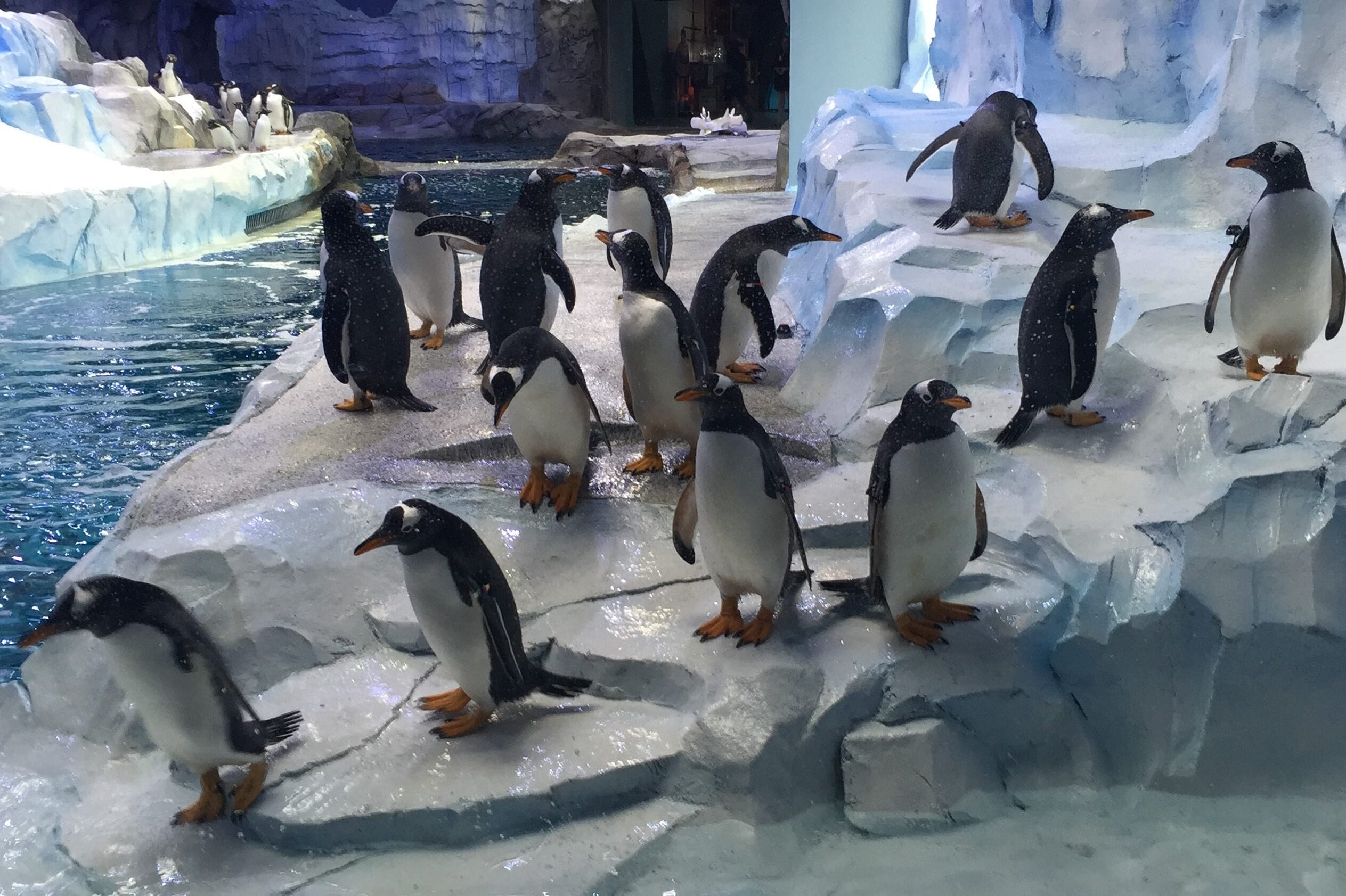
In the past, penguins lived in warm, airless enclosures that ignored their icy nature. They waddled across dry floors and swam in shallow, lukewarm pools. Many grew sick and weak, struggling to survive in conditions that felt nothing like home. Modern zoos now build temperature-controlled environments with chilled air, saltwater pools, and proper humidity. Penguins dive, splash, and thrive in comfort. Seeing them glide smoothly underwater reminds visitors that care takes effort, but the reward is watching life flourish exactly as it should.
12. Performing Bird Flights in Enclosed Auditoriums
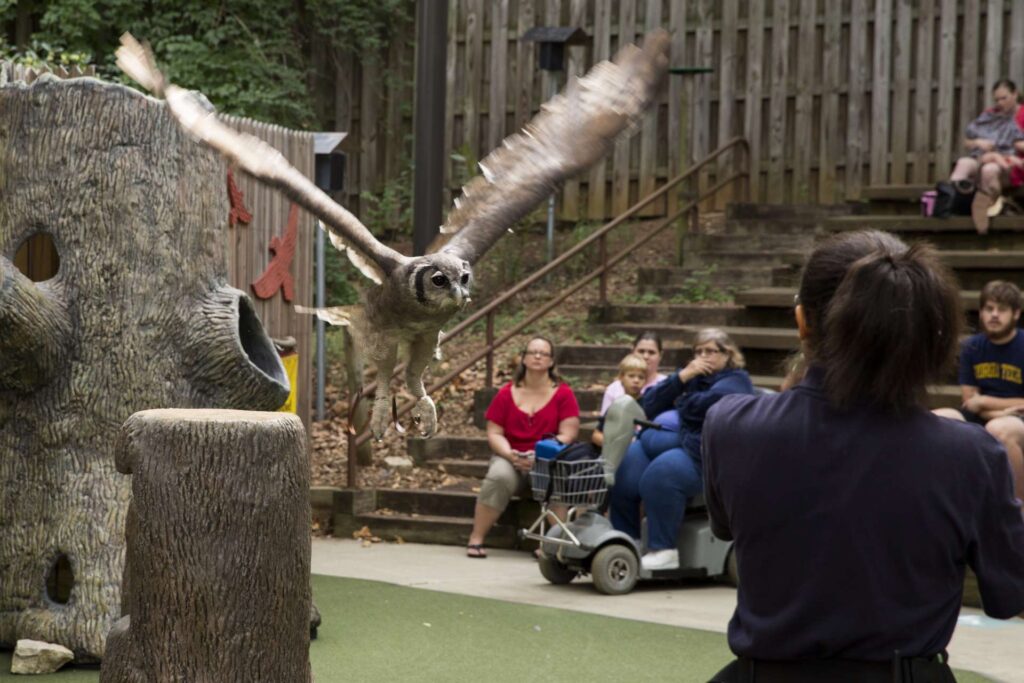
Birds once performed choreographed flight routines under bright lights, soaring over seated crowds to music. It was impressive but unnatural, confining their movement to spectacle instead of freedom. Some birds were injured, others disoriented by noise and glare. Today, zoos build open-air aviaries that encourage natural flight, giving hawks, eagles, and parrots room to move as they do in the wild. Visitors watch in quiet awe as wings stretch across open skies. What was once a show is now a celebration of flight itself.
13. Small Box Insect Displays Without Ecosystem Context

Short glass boxes once held insects alone as curiosities, reducing complex lives to motionless specimens for display. Without soil, plants, or companions, beetles, bees, and caterpillars could not forage, reproduce, or complete life cycles, and visitors learned little about their ecological roles. Those static exhibits inspired fear more than admiration and failed to teach how insects pollinate crops or recycle nutrients. Modern insect houses recreate gardens and microecosystems where pollinators visit flowers, decomposers break down leaf litter, and classrooms watch life cycles unfold in living displays that spark curiosity and respect. These exhibits show how tiny lives sustain whole systems.
14. White Tiger Attraction Breeding

White tigers once dazzled zoo visitors with their rare coats, but behind that beauty was a painful truth. They were bred through generations of inbreeding, causing deformities, blindness, and fragile health. It was vanity disguised as conservation. Modern zoos ended this practice, choosing genetic diversity over unnatural perfection. True preservation now means protecting entire species, not chasing a color. The white tiger’s story remains a reminder that beauty should never come at the cost of well-being. Nature’s variety is already enough.
15. Dolphins in Small Circular Pools
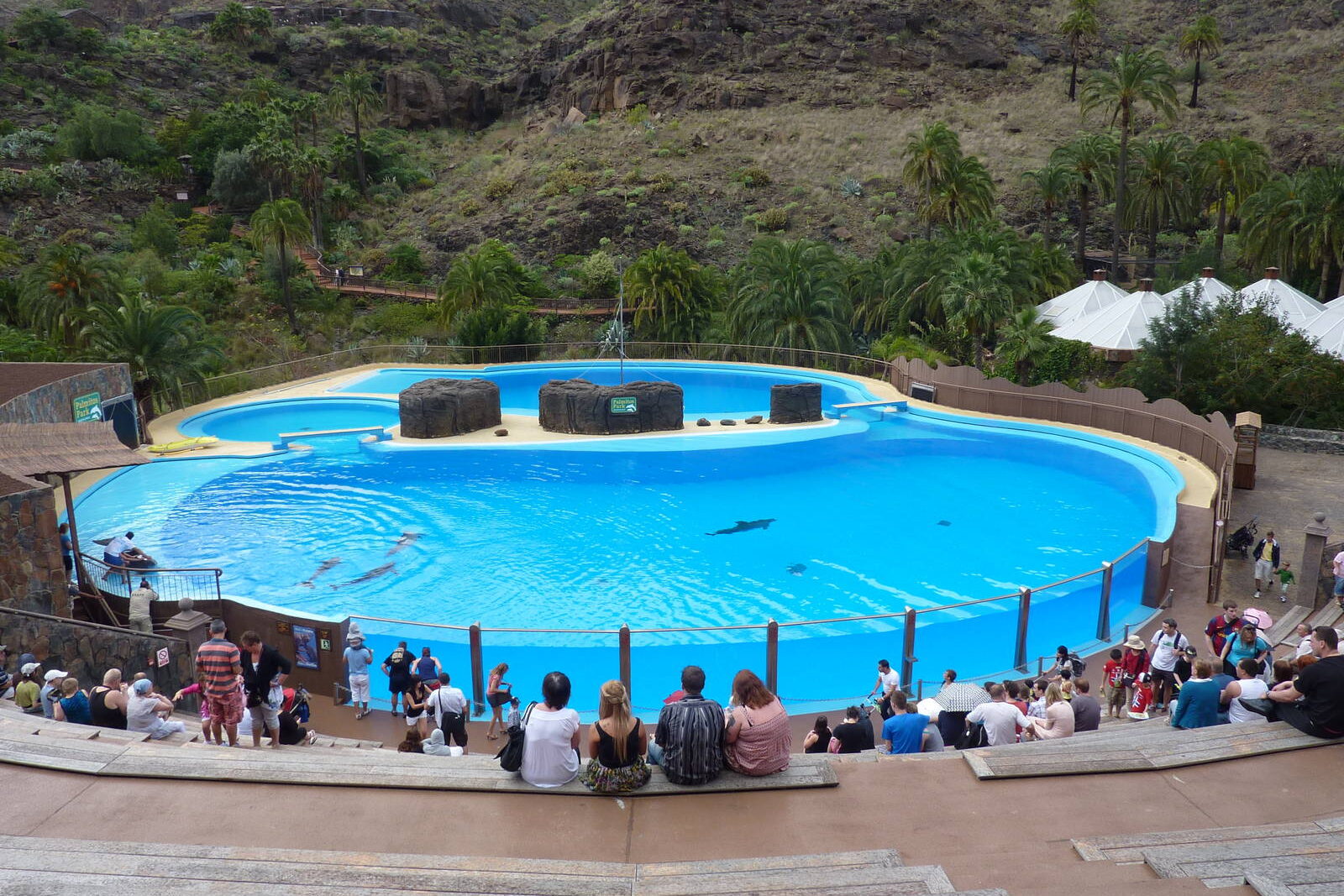
For years, dolphins lived in small circular tanks built for viewing convenience. They swam in endless loops, performing tricks for fish rewards. These intelligent, social animals lost their spark, trapped in water too shallow for their spirits. With time, understanding grew, and zoos began creating larger, deeper habitats that support group life and play. Some dolphins were even moved to ocean sanctuaries. Visitors now watch them behave as they do in the wild, free and graceful. What once entertained now educates, and that change means everything.
16. Animal Rides for Children (Lions, Bears, Ostriches)
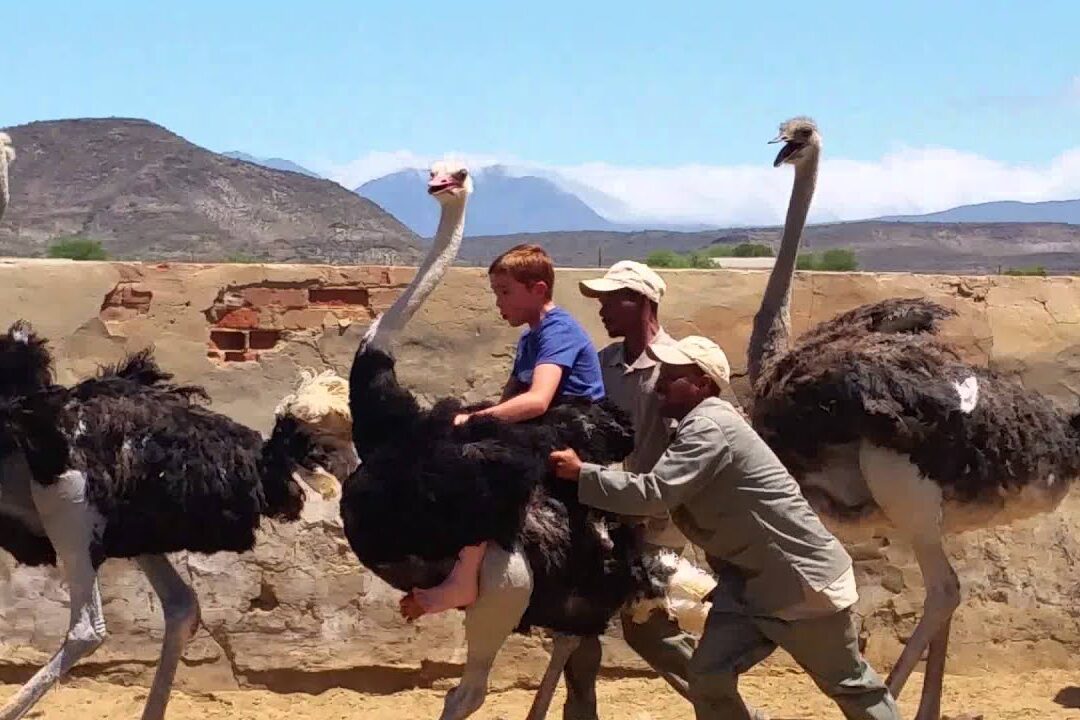
It is hard to imagine today, but children once rode lions, bears, and even ostriches for photos. The animals were often frightened, restrained, and overworked, their stress mistaken for obedience. Accidents were common, and both humans and animals suffered. Over time, zoos recognized the danger and cruelty, banning rides entirely. Today, interactions happen only with gentle, domesticated animals under safe supervision. The experience remains magical, but now it comes with understanding, not harm. Real joy is shared, not forced.
17. Night Houses with Constant Visitor Lighting
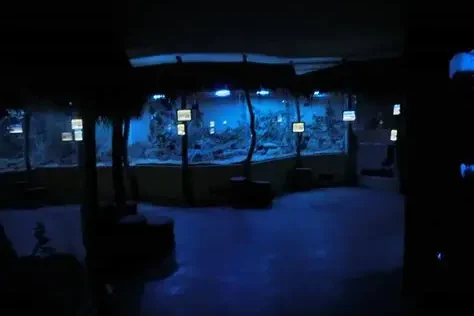
Nocturnal animals were often kept under continuous bright lighting so visitors could observe them at any hour, but this practice shattered natural sleep patterns and feeding cycles. Constant illumination confused internal clocks, leaving owls, bats, and other night dwellers exhausted, listless, or prone to illness. As understanding advanced, zoos began using reversed lighting schedules, dimmed viewing areas, and subtle red lights to simulate darkness when appropriate while still allowing public viewing during set hours. These changes supported health and natural behaviors and helped visitors learn to appreciate animals on their own terms. Respecting their rhythms improved welfare and deepened empathy.
18. Crowd Noise as Exhibition Feature

Old zoo layouts brought people close to cages, believing that noise and energy made visits exciting. The constant shouting and music caused stress, fear, and agitation in animals who had nowhere to hide. Scientists later linked high noise to shorter lifespans and nervous behaviors. Today, zoos design quieter, more thoughtful spaces that let visitors connect through observation, not chaos. Silence has become part of the experience, helping both people and animals feel calm. It is proof that peace speaks louder than applause ever did.
19. Touch Pools Without Rest Intervals

Touch pools once allowed constant contact with starfish, rays, and crabs, leaving them exhausted and injured. Without rest, they hid or stopped feeding altogether. Visitors meant well but didn’t realize the harm caused by endless touching. Modern zoos now rotate animals, give them recovery breaks, and provide supervision during interactions. People still touch marine life, but gently and respectfully, learning to value it beyond sensation. The change shows how small adjustments can protect entire ecosystems while keeping curiosity alive.
20. Rotating Animal Exhibits for Novelty
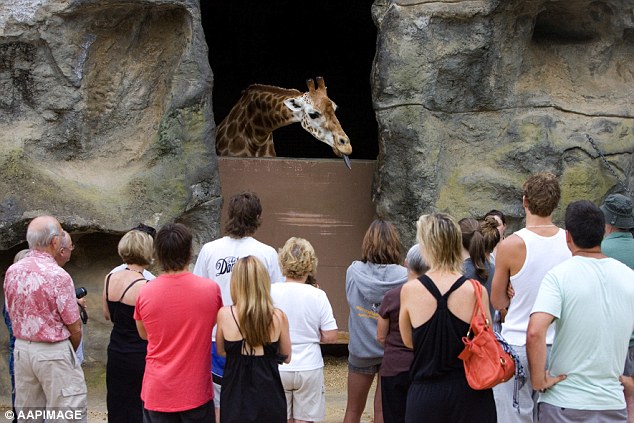
Zoos once swapped animals between enclosures just to keep visitors entertained. It disrupted social bonds and destroyed the sense of stability animals depend on. Stress, illness, and aggression became common results. Over time, experts learned that consistent environments build healthier, happier creatures. Today, zoos maintain stable territories where animals can form lasting routines and families. The focus has shifted from novelty to nurturing, from change for crowds to calm for life. It is a quiet victory for empathy, and it closes this story with hope.
This story 20 Zoo Attractions from the Past That Would Be Shut Down Immediately Now was first published on Daily FETCH


